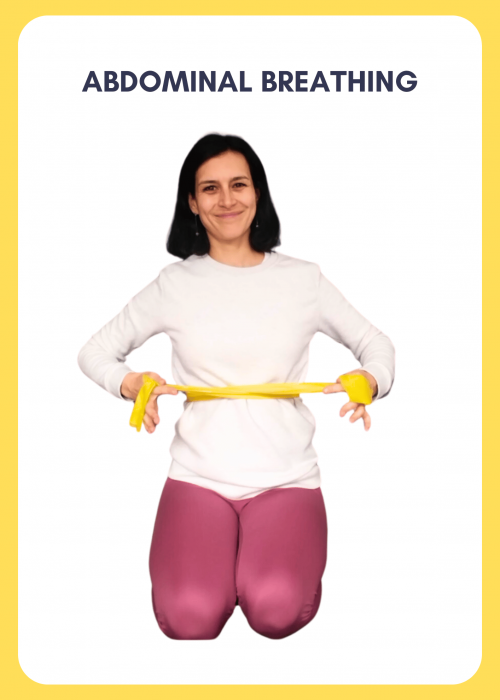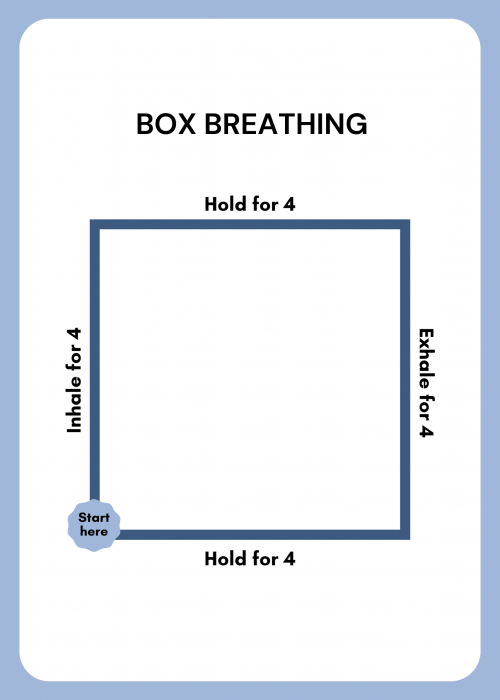Two Simple Breathing Exercises for Brain Health and Stress Relief

Breathing exercises have become really popular lately. Lots of wellness influencers, yogis and psychologists speak about the benefits of breathwork for mental and physical well-being. Yet, the significance of proper breathing often escapes our attention amidst the demands of daily life. It’s evident that breathing is essential for keeping us alive. So, it’s crucial to recognize the components of correct breathing patterns. In this blog post, we’re going to talk about why correct breathing is so important for our health. We’ll also cover how it affects our performance, and which simple breathing exercises can help us release stress.
Hyperventilation and Paradoxical Breathing
Breathing is a dynamic process that plays an essential role in sustaining our brain function. As the ultimate energy consumer, the brain demands a substantial portion of available glucose and oxygen. Impaired breathing patterns, such as hyperventilation and paradoxical breathing, can negatively impact cognitive and motor functions. Let’s break it down.
Chronic hyperventilation affects a significant part of the population. About 15-20% of people worldwide are chronic hyperventilators (people who hyperventilate regularly). Hyperventilation happens when we breathe too quickly or deeply, often without even realizing it. It leads to the overuse of upper chest muscles and excessive breathing relative to activity levels. Contrary to popular belief, deep breathing isn’t always necessary. Instead, aligning respiration with activity is key.
Paradoxical breathing is when the chest moves inward during inhalation instead of expanding outward. This happens when the muscles around the chest and abdomen aren’t working together properly. It can make it harder for us to inhale sufficient air and can affect our ability to move and exercise comfortably. That’s why it’s important to develop good breathing habits.
Abdominal Breathing
One simple and effective exercise that helps to address hyperventilation and paradoxical breathing is the so-called abdominal breathing. The idea is to engage the diaphragm when we breathe. So, when we breathe in, our diaphragm pushes down and “massages” the digestive organs. In other words, instead of using only your chest for respiration, you engage the abdomen. This may improve digestion and elicit a relaxation response. Thus, it can promote a sense of calmness and reduce stress levels.
In yoga and other training modalities, abdominal breathing is often called belly breathing. This emphasizes the idea of using the abdomen instead of breathing with the upper chest. The problem with this approach is that it doesn’t facilitate the 360-degree expansion of the lower ribcage. Instead, what often happens is that upper chest breathing persists but is accompanied by the expansion of the abdominal muscles.
A better idea is to practice abdominal (also called 360-degree) breathing with a band. You can use a fitness band or a yoga belt. Find your lower ribs and wrap the band around them. This will give you great sensory feedback. It will allow you to notice the 360-degree expansion of your ribcage as you feel an even stretch of the band in all directions. Try to inhale and feel the band stretching around the bottom of your ribs. In contrast, if you practice belly breathing, you only notice your abdominal wall moving forward without any expansion of the ribcage.

Box Breathing
Breathwork exercises can also offer profound benefits for stress relief. They can decrease sympathetic activity—the fight-or-flight response—and increase vagal tone, promoting relaxation and a sense of well-being.
One such technique is Box (or Square) Breathing. It involves inhaling for a count of four, holding the breath for a count of four, exhaling for a count of four, and holding the breath again for a count of four. This creates a rhythmic and balanced pattern of breathing. As I’m going through the exercise, what helps me remain mindful of my breath is actually visualizing a square. A square has equal lengths on all its sides. As I begin counting my breaths, I mentally “draw” a square. This is a really simple way to keep your mind focused on your breath. Begin by “drawing” just a couple of squares per session and gradually increase this number as you grow your practice.
In yoga, Box Breathing is called Sama Vritti Pranayama. Sama means “equal,” and vritti means “mental fluctuations.” As the name suggests, this pranayama technique helps regulate the nervous system, promotes calmness, reduces mental chatter, and enhances focus.

Conclusion
Breathing is powerful. And so are breathing exercises. By incorporating simple techniques into our busy schedules, we can achieve significant improvements in stress management, cognitive function, and well-being. The good news is that you don’t need much time, fancy equipment, or even extra space to feel better. Once you’ve mastered the skills, you can even practice ‘on the go,’ for example, when commuting or waiting in a queue in a supermarket. Be creative. Be open to new experiences. Don’t overthink it.

Are you interested in yoga, fitness, and personal development? So am I! Are you trying to juggle parenthood and work? Me too! In my blog, I write about all these topics (and more!) as I want to help working parents find energy, strength, and balance in life.

